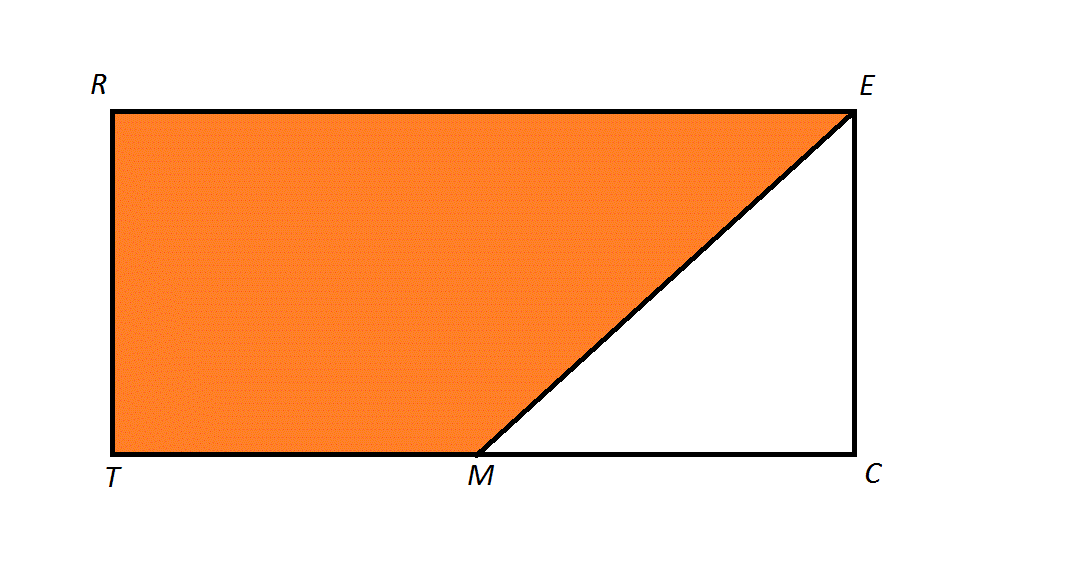All HSPT Math Resources
Example Questions
Example Question #11 : Plane Geometry
The hypotenuse of a right triangle is 

The area of a right triangle is half the product of the lengths of its legs, so we need to use the Pythagorean Theorem to find the length of the other leg. Set 
The legs have length 




Now find half the product:
Example Question #1822 : Hspt Mathematics
Which of the following is equal to the area of a rectangle with length 

Multiply each dimension by 
Multiply these dimensions to get the area of the rectangle in square centimeters:
Example Question #5 : How To Find The Area Of A Trapezoid

The above diagram depicts a rectangle 





The length of a leg of 

Since the triangle is isosceles, then 



Therefore, the orange region is a trapezoid with bases 


This is the length of one leg of the triangle.
Example Question #3 : How To Find The Area Of A Trapezoid
A trapezoid has a height of 


Use the following formula, with 
Example Question #242 : Ssat Middle Level Quantitative (Math)
What is the area of a triangle with a base of 

The formula for the area of a triangle is 
Plug the given values into the formula to solve:
Example Question #1231 : Concepts
Find the area of a square with side length 1.
To solve, simply use the formula for the area of a square. Thus,
Example Question #51 : Geometry
Find the area of a triangle with height 6 and base 3.
To solve, simply use the formula for the area of a triangle.
Given the height is 6 and the base is 3, substitute these values into area of a triangle formula.
Thus,
Example Question #53 : Geometry

What is 60% of the area of the above square?
The area of a square, it being a rhombus, is the product of the lengths of its diagonals. The diagonals are of the same length, so both diagonals have length 8, and the area of the square is

60% of 32 is equal to 32 multiplied by 

Example Question #52 : Geometry
A circle has radius 12. Which of the following gives 40% of the area of this circle?
The area of a circle with radius 

The radius of the circle is

40% of this is
Example Question #53 : Geometry
A rectangle measures six feet in width and four and one-half feet in height. Give its area in square yards.
9 square yards
243 square yards
81 square yards
3 square yards
3 square yards
Convert each dimension from feet to yards by dividing by conversion factor 3:
Their product is the area in square yards:

Certified Tutor
All HSPT Math Resources






































































